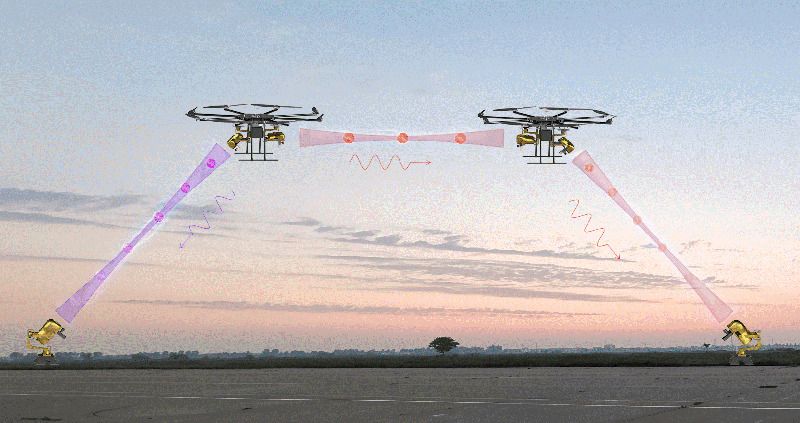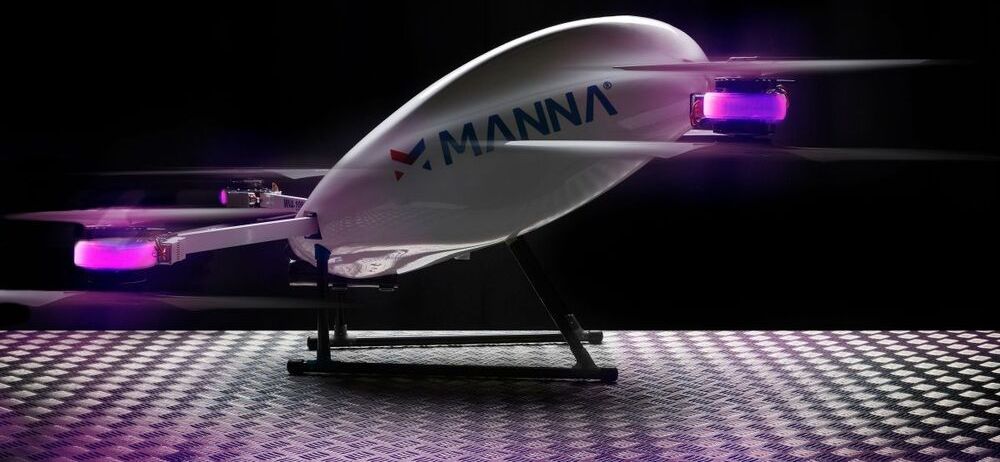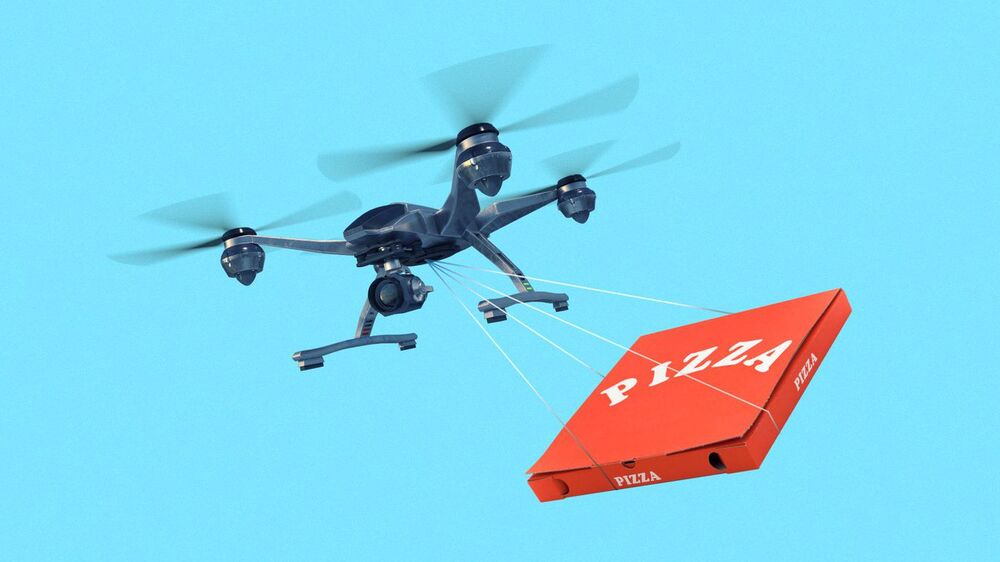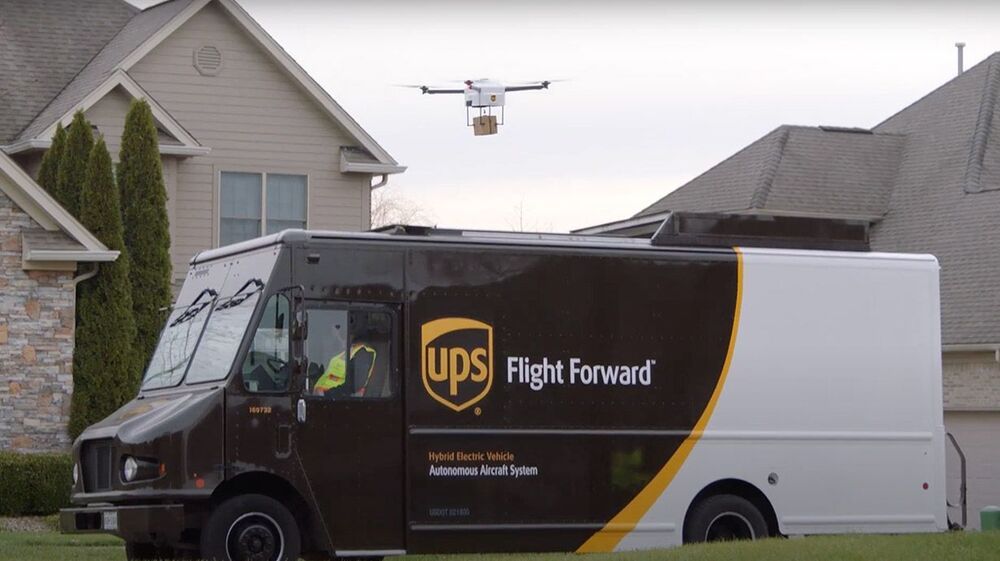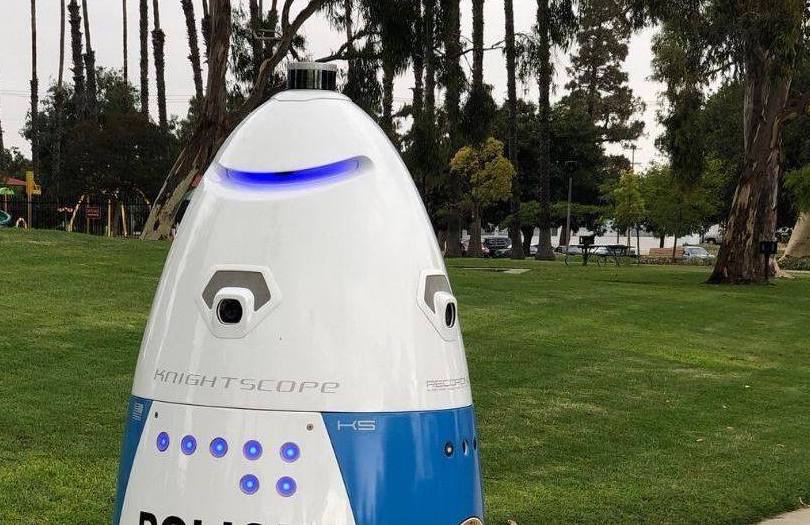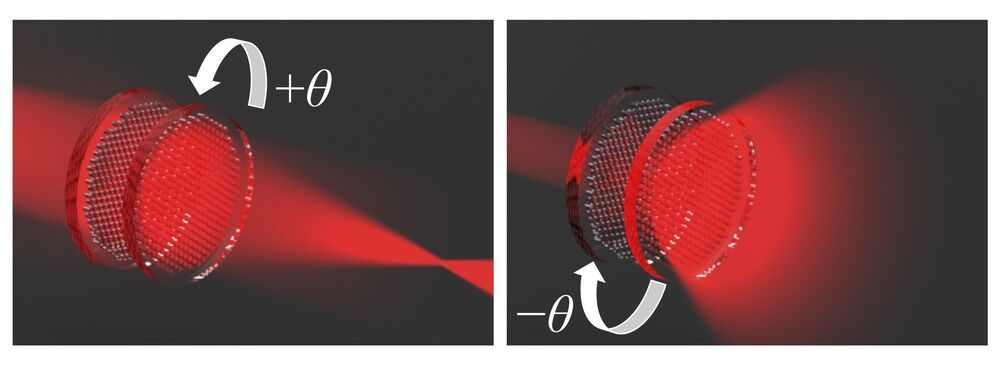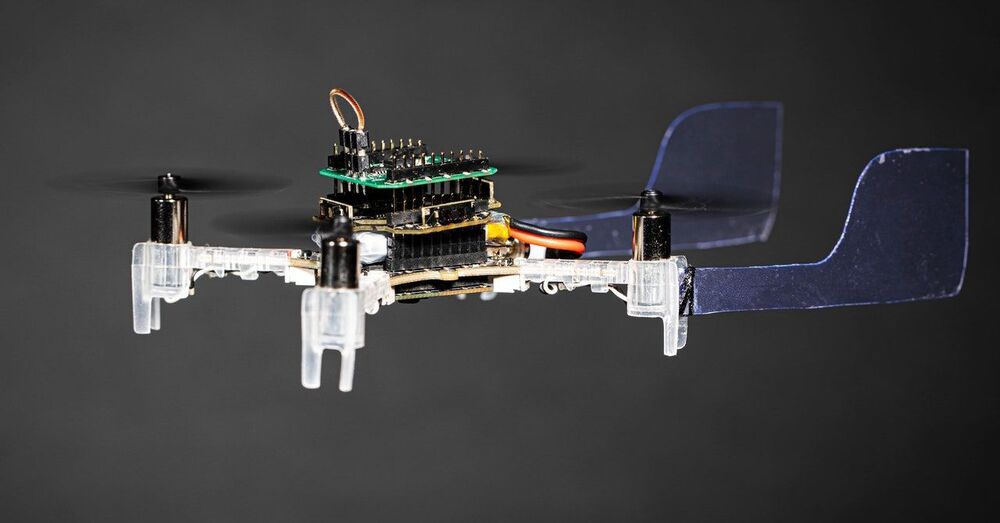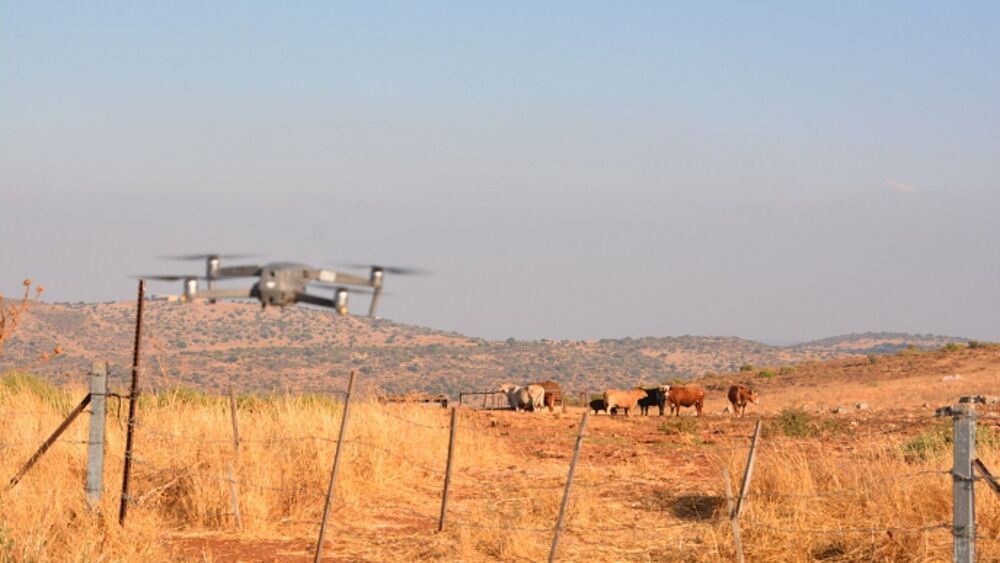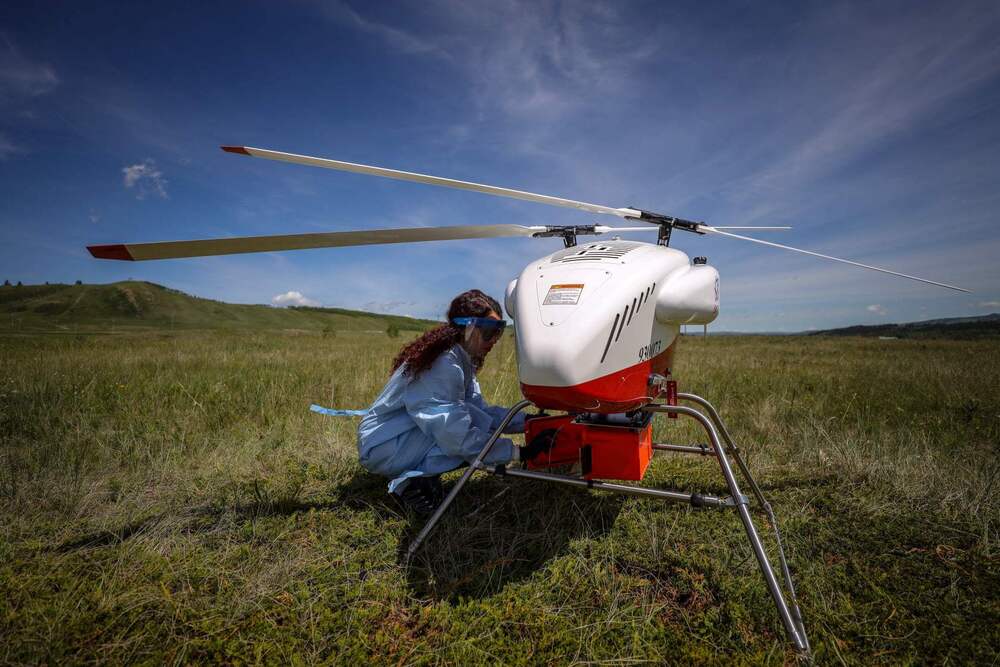Jan 15, 2021
Quantum Drones Take Flight
Posted by Genevieve Klien in categories: computing, drones, encryption, mobile phones, quantum physics, satellites
A small prototype of a drone-based quantum network has successfully relayed a quantum signal over a kilometer of free space.
The airwaves are chock full of “classical” information from cell phones, radio stations, and Wi-Fi hubs, but one day those waves could be carrying quantum encrypted messages or data input for a quantum computer. A new experiment has used a pair of hovering drones to dole out quantum information to two ground stations separated by 1 km [1]. This demonstration could lead to a drone-based quantum network that could be positioned—and easily repositioned—over a city or rural area.
Quantum communication promises fully secure message sharing. For example, two users could exchange encrypted messages using “entangled” photons, pairs of particles with a unique quantum-mechanical relationship. For every pair, one photon would be sent to each of the users, who would be alerted to any eavesdropping by a loss of entanglement between the photons. One of the most common methods for sending such quantum encrypted messages relies on optical fibers (see Viewpoint: Record Distance for Quantum Cryptography). But in fibers, a large fraction of the photons scatter before reaching their destination. More photons can survive if quantum information is transmitted through the atmosphere, as in the quantum link established using a Chinese satellite in 2018 (see Focus: Intercontinental, Quantum-Encrypted Messaging and Video). However, satellites are expensive and difficult to adapt to changing demands on the ground.
